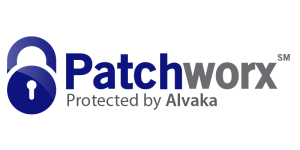Managing Ransomware Risks in Multi-Cloud Environments
Understanding the Landscape of Multi-Cloud Environments
At Alvaka, we recognize that the adoption of multi-cloud architectures is a critical component of modern IT strategy for businesses seeking flexibility, resilience, and scalability. By leveraging multiple cloud platforms, organizations can optimize their operations and tailor their cloud environments to specific workloads and business needs. However, this progressive approach to IT infrastructure also brings about unique complexities. It is essential to comprehend the multifaceted nature of a multi-cloud environment in order to effectively secure it against potential threats, such as ransomware.
The Lurking Threat: Ransomware in Multi-Cloud Infrastructures
Multi-cloud ransomware risk management is a significant concern for any organization that relies on cloud services. Ransomware, malicious software designed to block access to a system or data until a sum of money is paid, has evolved into a formidable threat in the digital landscape. In multi-cloud environments, where data flows across various platforms and services, management and security become even more challenging. Our vigilant approach ensures that these environments are not just efficient, but also well-defended against the pervasive threats that target their vulnerabilities.
The Importance of Multi-Cloud Ransomware Risk Management
We believe that the core benefit of multi-cloud adoption should not be overshadowed by the fear of cyber threats. Hence, emphasizing rigorous multi-cloud ransomware risk management protocols is tantamount to safeguarding the integrity and availability of the vast arrays of data housed in these environments. As stewards of our clients’ network security, we are committed to devising and implementing a robust, comprehensive risk management framework. This framework is meticulously designed to proactively identify potential risks, mitigate exposure, and maintain operational continuity, even in the face of an increasingly hostile threat landscape.
Identifying Vulnerabilities in a Multi-Cloud Setting
At Alvaka, we understand that identifying vulnerabilities within a multi-cloud environment is the cornerstone of an effective multi-cloud ransomware risk management strategy. With many organizations leveraging the power of multiple cloud platforms, the complexity of overseeing and securing these environments increases exponentially. To properly identify points of weakness, we conduct thorough risk assessments that consider the unique aspects of each cloud service in use, as well as the integration points between them. Our team meticulously evaluates the security configurations, access controls, data encryption practices, and network security protocols to uncover any potential vulnerabilities that might be exploited by ransomware attackers.
Multi-Cloud Ransomware Risk Management: Strategies and Best Practices
As we transition to a comprehensive approach towards multi-cloud ransomware risk management, our team emphasizes the importance of developing robust strategies that not only prevent but also prepare for potential ransomware attacks. We advocate for a multi-layered security framework that includes the following best practices:
- Regularly updating and patching all systems to mitigate known vulnerabilities
- Implementing strong identity and access management controls to limit the potential for unauthorized access
- Conducting frequent security training for staff to recognize phishing attempts and other social engineering tactics
- Deploying advanced threat detection tools that can identify suspicious behavior across clouds
- Establishing clear data backup and restoration procedures to ensure business continuity in the event of an attack
Moreover, our strategic planning takes into account the need for a cohesive incident response plan. We prepare detailed response protocols to reduce response times and limit the impact of a ransomware attack. These protocols are regularly reviewed and updated to deal with the constantly evolving threat landscape.
Tools and Technologies Supporting Ransomware Defense in Multi-Cloud Ecosystems
Recognizing the crucial role of technology in defending against cyber threats, we integrate various tools and solutions to bolster our multi-cloud ransomware risk management services. Our team utilizes cloud-native security features offered by providers, alongside third-party solutions for extra layers of protection. We leverage automated security monitoring and anomaly detection systems to provide real-time alerts. Furthermore, encrypting data in transit and at rest ensures that even if data is accessed maliciously, it remains unintelligible to attackers.
In adopting these tools, we maintain a delicate balance between heightened security and user accessibility. By harnessing advanced security analytics and machine learning algorithms, our experts are capable of predicting and preventing ransomware attacks before they can cause harm. Additionally, through continuous security posture assessments, we make sure that each tool is functioning optimally and that our multi-cloud environment remains fortified against threats.
Did you know? A robust multi-cloud ransomware risk management strategy not only involves deploying cutting-edge tools but also requires regular vulnerability assessments to adapt to evolving threats.
In today’s fast-paced digital world, cybersecurity threats like ransomware are ever-evolving, challenging businesses to stay vigilant and proactive in their security strategies. At Alvaka, we understand the critical importance of maintaining a dynamic multi-cloud security posture that adapts to new threats. Our approach to ransomware recovery and prevention is not a one-time effort, but a continuous cycle of assessment, implementation, and refinement. We ensure that our clients’ multi-cloud environments are not static targets but fortified assets, prepared to thwart emerging threats before they can cause harm.
We at Alvaka are committed to delivering cost-effective solutions without compromising on the robustness of our multi-cloud ransomware risk management. To achieve this, we balance the complexity of diverse cloud environments with strategic planning and intelligent resource allocation. Ensuring compliance with the latest regulations and industry standards is at the forefront of our agenda. Through this balance, we assist businesses in not only safeguarding data and applications but also in optimizing operational efficiency and maintaining business continuity.
As we look to the future, the mission of Alvaka is clear—to continuously enhance and fortify security measures in the face of new and advancing ransomware tactics. By leveraging our expertise in multi-cloud ransomware risk management, we are dedicated to helping businesses stay one step ahead of attackers. Our multi-pronged strategy includes innovative tools and technologies, employee education, and a culture of security that permeates every layer of our service delivery. With these pillars, we ensure that your multi-cloud environments are not just defended but resilient—ready to face tomorrow’s cybersecurity challenges head-on.
FAQ
What is multi-cloud ransomware risk management? ▼
We define multi-cloud ransomware risk management as the process of identifying, assessing, and mitigating the risks associated with ransomware attacks across multiple cloud environments. It involves implementing a set of coordinated strategies and controls to protect our cloud infrastructure, data, and applications from unauthorized encryption and data hijacking.
Why is ransomware a significant threat in multi-cloud environments? ▼
Ransomware is a significant threat in multi-cloud environments because these architectures often involve complex, interconnected systems that can create potential security gaps. Furthermore, cybercriminals are increasingly targeting cloud services where they believe data is more valuable, and consequently, organizations are more likely to pay a ransom. Therefore, it is crucial to maintain a vigilant and robust security posture.
How can vulnerabilities be identified in a multi-cloud setting? ▼
We identify vulnerabilities in multi-cloud settings by conducting regular security assessments that include penetration testing, vulnerability scanning, and compliance checks. Additionally, utilizing cloud-native and third-party security tools can automate the detection of misconfigurations and security gaps that could be exploited by ransomware.
What are some strategies for managing ransomware risks in multi-cloud infrastructures? ▼
Key strategies include adopting a layered security approach with firewalls, endpoint protection, and intrusion detection systems; implementing robust data backup and recovery processes; and ensuring continuous security monitoring. Moreover, investing in employee training to recognize and react to potential threats plays a significant role in our risk management approach.
What tools and technologies are effective against ransomware in multi-cloud ecosystems? ▼
Effective tools and technologies include cloud access security brokers (CASBs), secure web gateways, advanced threat protection platforms, and endpoint detection and response (EDR) solutions. Also, encryption technologies and comprehensive identity and access management (IAM) systems are critical in defending against unauthorized access and potential ransomware attacks.
How does compliance impact multi-cloud ransomware risk management? ▼
Compliance with industry regulations and standards, such as GDPR, HIPAA, and ISO 27001, directly impacts our risk management practices. It ensures that we adhere to best practices for data protection and have proper controls in place to mitigate the risk of ransomware attacks, making compliance an integral component of our overall security strategy.
How often should we conduct security assessments in our multi-cloud environments? ▼
We should conduct security assessments at regular intervals and also as significant changes are made to our cloud environments. At a minimum, annual assessments are advisable, but the frequency can be increased depending on the sensitivity of the data and the evolving threat landscape.
Can multi-cloud ransomware risk management be automated? ▼
Yes, certain aspects of multi-cloud ransomware risk management can be automated. For instance, we can automate the continuous monitoring of our networks and systems, patch management, and vulnerability scanning. However, it is important to complement automation with expert oversight to ensure that potential threats are properly identified and addressed.
What role does incident response planning play in ransomware risk management? ▼
Incident response planning is essential as it outlines the procedures to follow in the event of a ransomware attack. It facilitates a quick and organized response, minimizing downtime and damage. A well-practiced incident response plan ensures that we can recover swiftly and effectively while maintaining business continuity and protecting sensitive data.
Looking ahead, how can we continue to fortify our multi-cloud environments? ▼
To fortify our multi-cloud environments against emerging threats, we must stay informed about the latest cybersecurity trends and technologies. Additionally, incorporating artificial intelligence and machine learning can enhance our threat detection capabilities. Ultimately, fostering a culture of security awareness and encouraging proactive measures will be pivotal in staying ahead of future threats.








 Smoke testing is a term used to describe the testing process for servers after patches are applied.
Smoke testing is a term used to describe the testing process for servers after patches are applied.  This is a basic cost calculator for you to compute your typical monthly cost for patching your servers, PCs, laptops, tablets and associated application software. It also forms the basis for you to begin calculating your Return on Investment for software patching, or for comparison with alternatives to the manual process of patching operating systems and application software—such as Patch Management as a Service, also known as Vulnerability Management as a Service.
This is a basic cost calculator for you to compute your typical monthly cost for patching your servers, PCs, laptops, tablets and associated application software. It also forms the basis for you to begin calculating your Return on Investment for software patching, or for comparison with alternatives to the manual process of patching operating systems and application software—such as Patch Management as a Service, also known as Vulnerability Management as a Service.